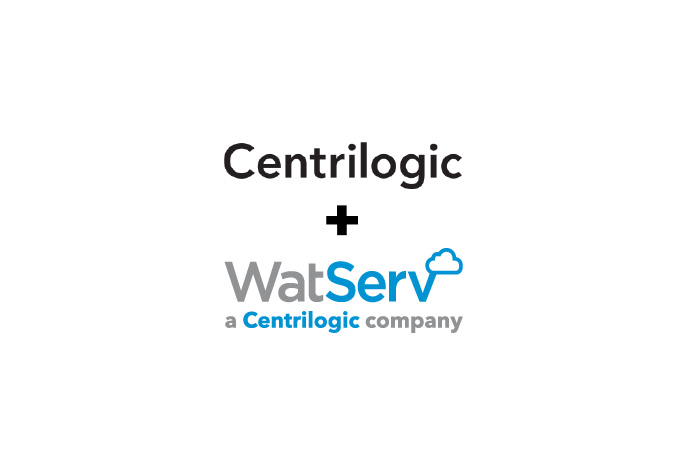Top Benefits of Public Cloud in 2022
By WatServ
June 23, 2022
The global pandemic has sped up what was already a clear trend in IT infrastructure. The cloud is now at the heart of many businesses’ digital transformation plan, with the promise of a more agile and streamlined infrastructure to support the fast-changing marketplace.
But contrary to the generalizations often used, there’s not just one cloud: companies are using a variety of solutions in order to take advantage of cloud capabilities. These include public, private and hybrid cloud services.
In this article, we’ll explore the benefits of the public cloud. Public cloud offerings are often the most visible and easily accessible, so it’s important to understand what the public cloud is, what it offers and why you might choose it to support your business.
What is a Public Cloud?
Let’s start with the basics: what exactly is a public cloud?
The cloud refers to a model of enabling servers, networks, storage and apps through the internet. This means that services can be run across a distributed network, with the ability for users to rapidly scale up or down their usage.
The public cloud is cloud computing services that are offered by third-party companies. If you’ve ever used Google Drive or Apple iCloud, you’ve used the public cloud.
Public cloud offerings can either be free, or purchased (often on a per-usage or subscription model). And while the public may be most familiar with SaaS offerings on the public cloud (e.g. Dropbox or Google Drive), there are also PaaS (e.g. Microsoft Azure, OpenShift, or AWS Elastic Beanstalk) and IaaS (e.g. AWS or IBM Cloud) services available.

Benefits of Public Cloud
The public cloud computing market continues to boom; some estimates predict that its estimated worldwide value will be $482bn USD by 2022.
What makes the public cloud so popular? Let’s cover the major benefits that have led many businesses to decide to migrate to public cloud services.
Reduce Costs
In traditional IT environments, provisioning services means using physical resources on your onsite servers. This means making several large and ongoing investments, such as:
- Purchasing and upgrading equipment
- Paying for space to house your resources
- Maintenance and server management costs (including staffing costs to oversee your servers)
With a public cloud offering, you eliminate many, if not all, of these costs. There’s no need to make large capital investments: with cloud computing you only pay for the resources you’re currently using. Your maintenance and software updates are included within your cloud subscription, which means you can treat these expenses as fixed rather than variable. And because public cloud providers are sharing costs across their user base, you can typically expect to spend less for the most up-to-date software and hardware.
Increase Flexibility
In traditional IT environments, scaling up or down your services means adding or removing infrastructure, which can be time-consuming and expensive. With cloud computing, it’s easy to scale up or down your services quickly. And with pay-as-you-use pricing models, you only pay for the resources you actually need.
Public cloud also offers more flexibility for employees, as they can easily access files remotely. As the pandemic has shown, the ability to be location-independent is a huge business advantage—and employees and companies will continue to benefit from cloud’s flexibility long after the pandemic is over.
Improve Security
While there are inherent risks to storing data off-site, the truth is that public cloud service providers likely have more security measures in place than you would manage in-house. This includes access to dedicated cybersecurity experts, use of the latest technology, and regular penetration testing. And while this doesn’t mean breaches never happen, holding your data on internal servers is also no guarantee—especially as insider threat is one of the most common causes of security breaches.
Private vs. Public Cloud
While there are many benefits to choosing a public cloud option, public cloud isn’t the only option. Companies can also opt for private or managed cloud or even a hybrid option.
So, what are the private vs. public cloud benefits? What solution is best for your company?
A private cloud comprises cloud computing services that are used only by your business: all services and infrastructure exist on a private network, and all the resources are dedicated to your company. The physical infrastructure needed to house your private cloud can either be on site or hosted by a third-party provider. This differs from the public cloud, where you are sharing resources with other companies and accessing services over the public internet.
Private clouds offer a range of benefits to organizations. These include:
- Easier to customize in order to meet specific needs or requirements
- More control and privacy due to not sharing resources with other organizations
- Better performance—with the public cloud, if other users are exceeding their usage limits, you may experience downtime or slower service speeds
Private clouds also share many of the same benefits that public clouds do over traditional IT infrastructure, including increased flexibility and enhanced security.
Compare the benefits of the private cloud to the public cloud, where you’re usually limited to a standard setup that doesn’t allow deep customization. The public cloud also means you lose significant control over vast areas of your IT management, meaning you need to rely on the decisions made by IT professionals who aren’t connected to your business.
However, private clouds are more expensive to set up and maintain. Because you’re accessing dedicated resources, there’s no sharing of the costs amongst a pool of users. And in order to get the most out of the greater customization enabled by a private cloud, you’ll likely need to have an in-house IT team to help manage your cloud. There’s more up-front hassle in getting yourself set up with a private cloud, compared to choosing a public cloud solution.
Choosing a Cloud Provider
What does all this mean for you? Here’s a quick guide on how to choose a cloud service provider that will meet your business needs.
1. Know your environment
The right solution will depend on your business size, industry, and unique needs. You’ll also want to think about your existing infrastructure, as well as what level of in-house expertise you have. Finally, you need to consider any constraints, such as budget or data sovereignty requirements.
2. Determine the cloud services needed
Your choice of a cloud provider should take into account your long-term business strategy and goals. How will your business change and grow over the next 5-10 years and what IT infrastructure do you need to support that growth? As you explore cloud providers make sure their services align with your larger business goals.
3. Decide on your evaluation criteria
Develop a matrix for assessing the various offerings that are available. Factors to consider may include cost, security, service level agreement conditions, support and others. Carefully evaluate the providers you are considering against the factors you decide are critical.
4. Perform due diligence on providers under consideration
Your data is a precious business asset. You want to ensure that you’re working with a cloud provider that you can trust. Look for signs that the provider is in good business health and complies with industry certifications and standards. A reputable provider should be happy to offer you the documentation you need to do your due diligence.
5. Understand your service level agreement
Before you decide to sign on the dotted line, make sure you understand all the responsibilities and requirements of your service level agreement. Public cloud providers operate on a shared responsibility model and you need to make sure you understand what you will need to keep doing in-house.
Bringing You the Right Solutions
With so many options, navigating your way through the cloud can feel overwhelming. That’s why having a partner you can trust is invaluable. At WatServ, we’ve delivered cloud solutions to companies since 2006.
Learn more about how WatServ can help by visiting our Solutions page.
About
WatServ is an IT solutions provider that helps organizations digitally transform through cloud technologies and managed services.
Serving clients as a trusted advisor since 2006, WatServ provides experience-tested, strategic solutions across all stages of the digital transformation journey. Clients choose WatServ to migrate infrastructure and applications to the cloud, secure critical data, implement disaster recovery, deploy virtual desktop, enable data-readiness for productivity solutions and manage IT environments.
Our clients span a broad range of industries, and we’re a global supplier of IT services for many Brookfield Portfolio Companies. To help our mid-size clients, we provide scalable offerings that simplify cloud adoption and drive business optimization. For enterprise clients, we co-create cloud solutions that enable stability and efficiency for complex IT tools and processes.
With more than 15 years of experience, WatServ has a track record of delivering quantifiable business results and a superior client experience. Ranked as one of Canada’s Top 100 Solution Providers for the last three years in a row, WatServ is always on.

